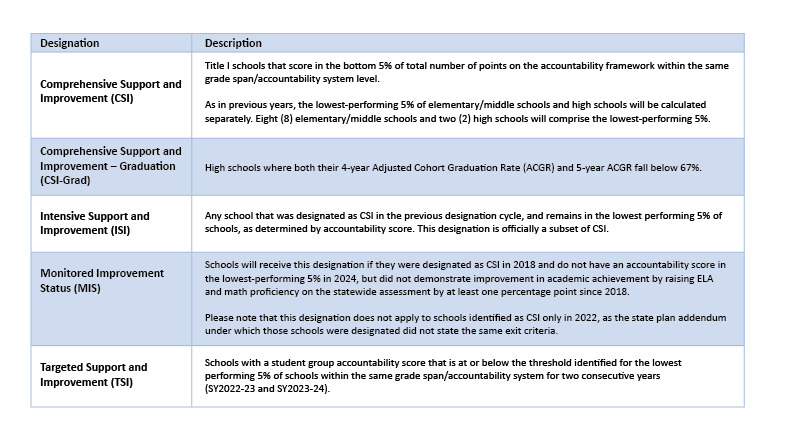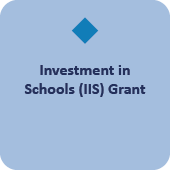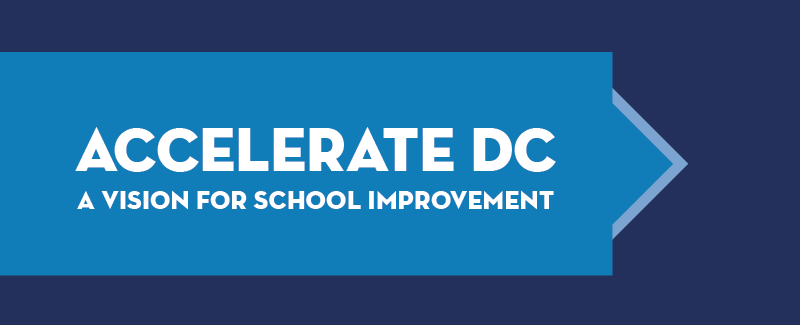
The DC Office of the State Superintendent of Education’s (OSSE) strives to close opportunity gaps and ensure learners of all ages and backgrounds are prepared to succeed in school and in life. OSSE is committed to strengthening the school improvement supports and accountability mechanisms in place for the District’s lowest performing schools.
Accelerate DC: A Vision for School Improvement (September 2024), lays out a new theory of change for school improvement efforts in DC, in which OSSE supports its designated lowest performing schools with clear expectations, access to funding, planning and supports, aligned resources, and strong collaboration and partnership, so that schools implement strong improvement plans focused on targeted domains, ultimately improving learning outcomes for all students.
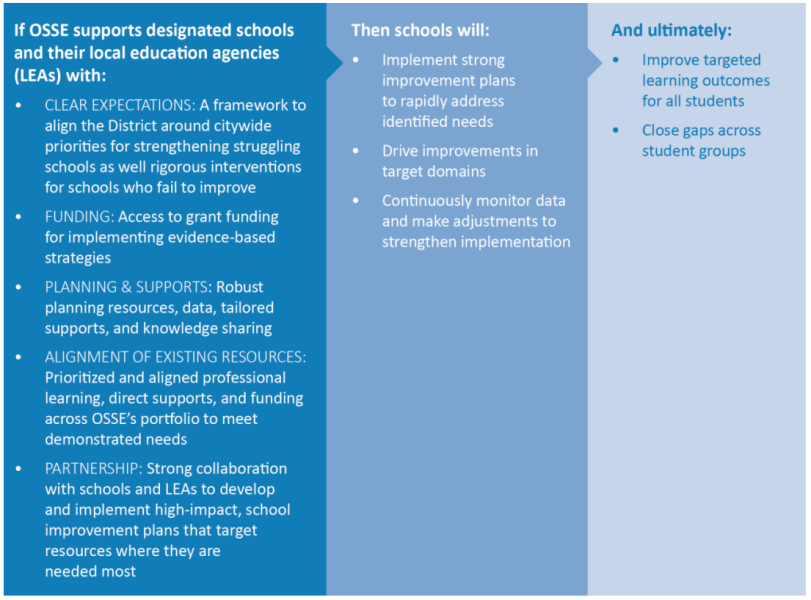
The Accelerate DC framework is grounded in five key domains that represent national best practices related to school improvement, adapted for the unique context of the District: (1) transformational leadership, (2) talent development, (3) instructional excellence, (4) a strong school climate and (5) organizational health. The Accelerate DC framework is centered on student outcomes and the guiding principles of equity and continuous improvement.
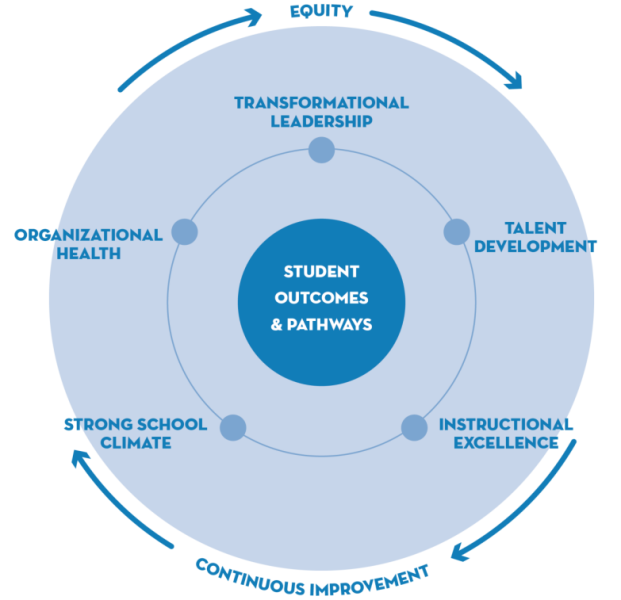
Designation Categories
OSSE is federally required by the US Department of Education (USED) to designate DC’s lowest performing schools for improvement and additional support, under the 2015 Elementary and Secondary Education Act (ESEA), as amended by the Every Student Succeeds Act (ESSA). This designation process must use methodologies detailed in OSSE’s ESSA State Plan as approved by USED.
OSSE made school improvement designations for the first time under its 2022 ESSA State Plan Amendment in December 2024. These designations were made using OSSE’s statewide accountability framework, and include four (4) designations based on school-wide accountability scores, as well as one (1) designation for schools that are consistently underperforming for a particular student group, as follows:
